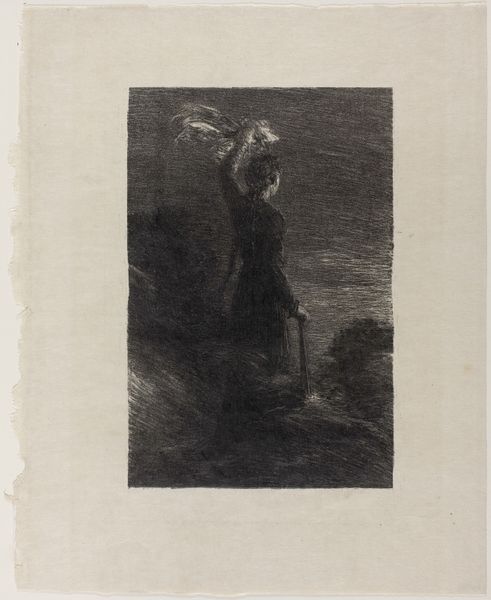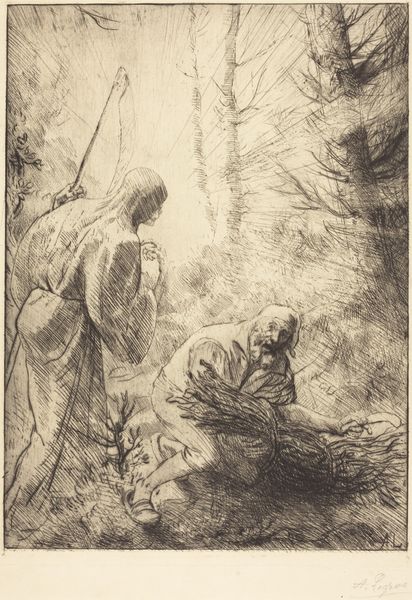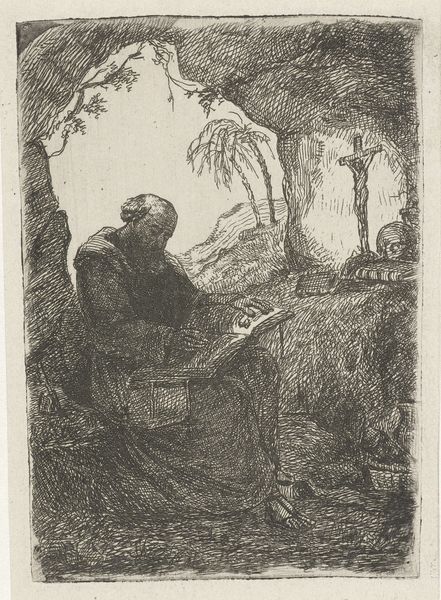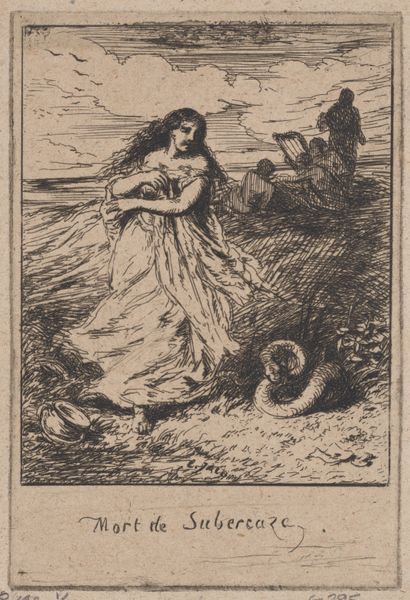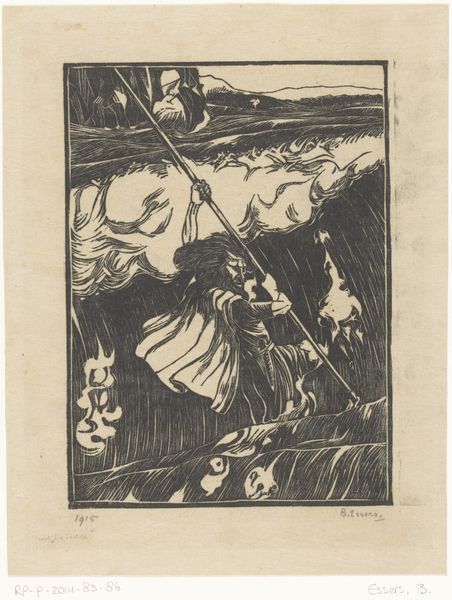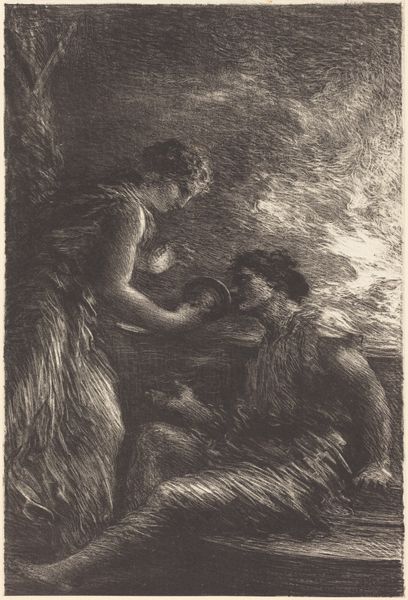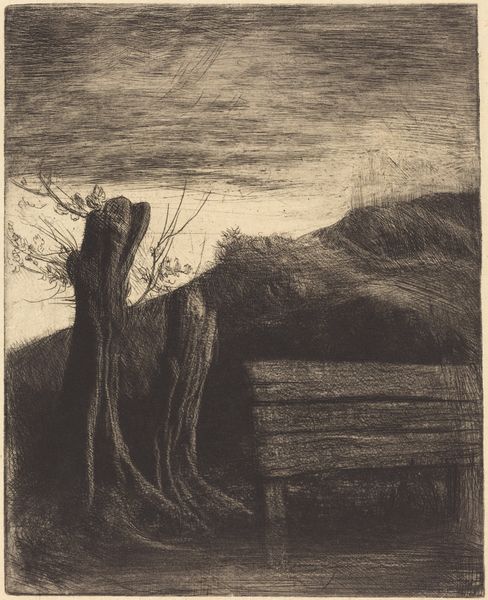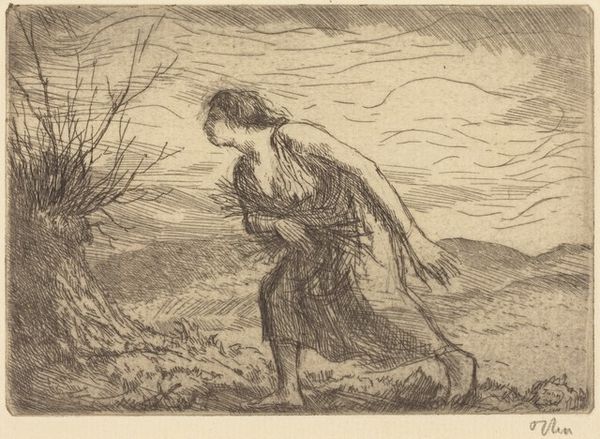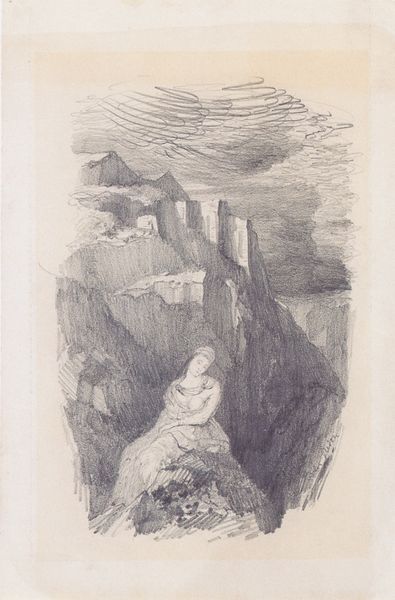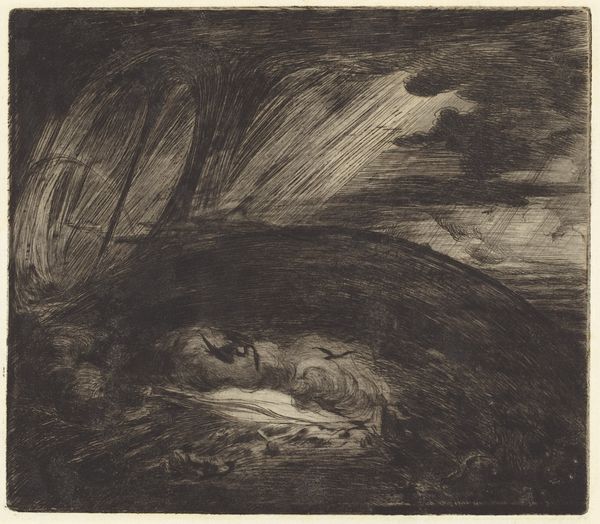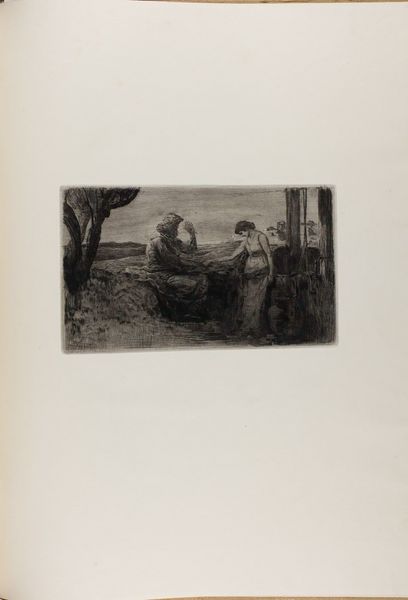
Copyright: Public domain
Curator: This pencil drawing by Théophile Alexandre Steinlen, created in 1911, is entitled "Repos de Vagabonds." It translates to "Rest of the Wanderers." Editor: It's somber, isn’t it? The tones are quite muted, almost monochromatic. It evokes a sense of weariness and quiet resignation. Curator: Steinlen was deeply engaged with social issues. He often depicted the lives of the working class and the marginalized. This piece reflects that. Editor: Absolutely. You can feel the weight of their circumstances in the scene he has drawn, even in this “rest.” The landscape feels barren, almost hostile, pressing in on them. Is the woman holding a child? Curator: Yes, she is. Consider the social context: urban migration, poverty, and the challenges faced by families in early 20th-century Paris. Editor: And her posture is so telling. She isn't relaxing, despite the title. Her whole being is directed at this small child. What does their rest offer her, in the context of a world offering such dire circumstances? How much protection can one woman give, how much safety? It brings up ideas about maternal labour and class for me, particularly the vulnerabilities of women living on the edges of society. Curator: Steinlen made a career of such scenes. And one should also consider the politics of imagery here: the representation of poverty, the gaze of the viewer and what’s changed or not since it was created. Editor: And yet, in that weariness, there's resilience. The act of resting, however brief, becomes a form of resistance. Thank you for illuminating some of the historical complexities interwoven in Steinlen's affecting piece. Curator: My pleasure, and thank you for bringing forth those nuanced, essential points for our listeners to consider when viewing Steinlen’s artwork today.
Comments
No comments
Be the first to comment and join the conversation on the ultimate creative platform.
